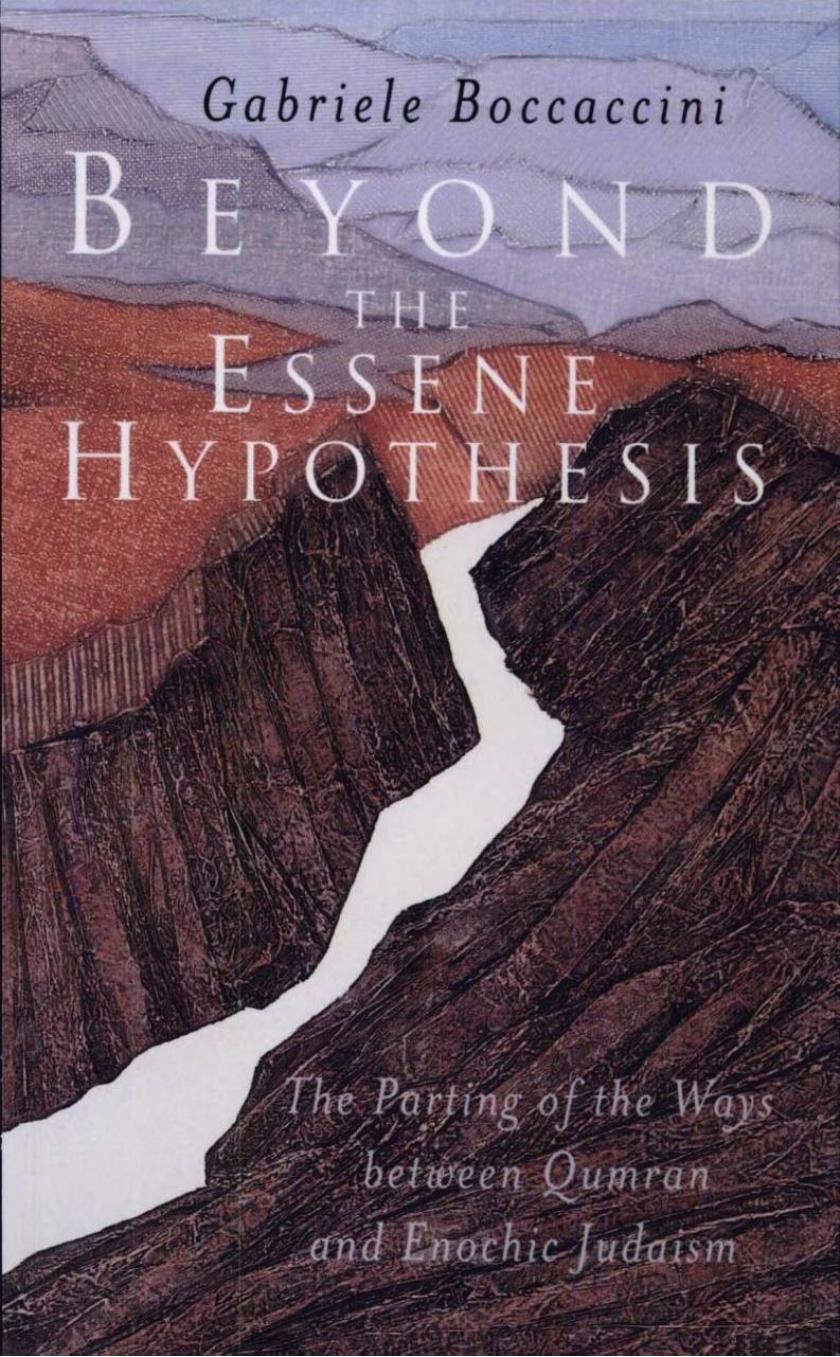Beyond the Essene Hypothesis: The Parting of the Ways between Qumran and Enochic Judaism by Gabriele Boccaccini

Author:Gabriele Boccaccini [Boccaccini, Gabriele]
Language: eng
Format: epub, pdf
Published: 2010-03-01T16:14:00+00:00
At this point, the compiler felt compelled to integrate the text from the Book of Noah by adding a few sentences to Enoch's speech. "After that there shall occur still greater oppression than that which was fulfilled upon the earth the first time; for I do know the mysteries of the holy ones, for he, the Lord, has revealed them to me and made me know - and I have read (them) in the tablets of heaven" (106:19). The reference to the tablets of heaven reminds the reader of the Astronomical Book and prepares the path for a synopsis of the central message of the Proto-Epistle. As Noah and his sons were spared from the flood, so a new remnant will be selected at the end of the final tribulation. "Then I beheld the writing upon them that one generation shall be more wicked than the other, until a generation of righteous ones shall arise" (107:1). The theology of the interpolation is very close to the doctrine of election in the Proto-Epistle. The compiler aims to say that the words which Enoch addressed to his sons are equally addressed to the righteous of the final days, and to show how the message of the Proto-Epistle fits into the context of the entire Enochic revelation. That the interpolation does not refer to the contents of section 94:6-104:6 suggests that the latter was unknown to the compiler. The last part of Enoch that the compiler knew and summarized was the Proto-Epistle.
Finally, more light on the relationship between the Proto-Epistle and the Epistle comes from a comparison of their different ideologies. In a seminal study on the Epistle of Enoch and the Qumran literature, George W. E. Nickelsburg argued for the presence in the document of two contradictory ideologies 32 While he sees "strong evidence for a historical con nection between the author of [the Apocalypse of Weeks] and the authors of the relevant Qumran writings," he rejects the hypothesis of a Qumranic origin of the final composition. "I have found in the Epistle neither the specific exegetical traditions nor the specific polemics against temple, cult, and priesthood characteristic of Qumran, nor the heightened dualism which would confirm [sectarian] authorship."33 Garcia Martinez shares Nick- elsburg's opinion: "All specific polemic against the temple, the cult or priesthood, is lacking in the Epistle, as are the specific exegetic traditions of the Qumranic community and its characteristic ideas, such as dualism."34 Since Nickelsburg and Garcia Martinez believe that the Epistle was known at Qumran, the only possibility for them is that the Epistle is also a presectarian document, that is, a document from the parent movement from which the Qumran community arose.
Download
Beyond the Essene Hypothesis: The Parting of the Ways between Qumran and Enochic Judaism by Gabriele Boccaccini.pdf
This site does not store any files on its server. We only index and link to content provided by other sites. Please contact the content providers to delete copyright contents if any and email us, we'll remove relevant links or contents immediately.
The Gnostic Gospels by Pagels Elaine(2400)
Jesus by Paul Johnson(2230)
Devil, The by Almond Philip C(2207)
The Nativity by Geza Vermes(2117)
The Psychedelic Gospels: The Secret History of Hallucinogens in Christianity by Jerry B. Brown(2073)
Forensics by Val McDermid(1979)
Going Clear: Scientology, Hollywood, and the Prison of Belief by Lawrence Wright(1884)
Going Clear by Lawrence Wright(1873)
Barking to the Choir by Gregory Boyle(1731)
Old Testament History by John H. Sailhamer(1714)
Augustine: Conversions to Confessions by Robin Lane Fox(1688)
The Early Centuries - Byzantium 01 by John Julius Norwich(1655)
A History of the Franks by Gregory of Tours(1639)
The Bible Doesn't Say That by Dr. Joel M. Hoffman(1611)
Dark Mysteries of the Vatican by H. Paul Jeffers(1607)
A Prophet with Honor by William C. Martin(1603)
by Christianity & Islam(1564)
The First Crusade by Thomas Asbridge(1539)
The Amish by Steven M. Nolt(1492)
